How to Publish a Book
How to Publish a Book: The Ultimate Guide
If you have always dreamed of publishing a book, but don’t know where to start, then this is the guide for you. In this ultimate guide on how to publish a book, we will walk you through every step involved in the process, from idea to finished product. So whether you are an aspiring author or an experienced writer, read on for all the information you need to make your dream of becoming a published author a reality. Let’s get started on how to publish a book.
- Start writing your book
- Title your book
- Complete your draft
- Edit your book
- Format your manuscript according to the standard specifications
- Design the book cover
- Create an author website and social media profiles
- Determine your publishing route
- What is Traditional Publishing?
- What are the advantages of Traditional Publishing?
- What are the disadvantages of traditional publishing?
- Research publishers and agents
- Write a query letter
- Write a book proposal
- What is Self Publishing?
- What are the advantages of self-publishing?
- What are the disadvantages of self-publishing?
- What is Hybrid Publishing?
- What are the advantages of hybrid publishing?
- What are the disadvantages of self-publishing?
- Create a paperback version of your manuscript
- Create an ebook version of your manuscript
- Market your book to potential readers
- Wait for reviews and promote your work accordingly
Start writing your book
Before you begin writing your book, it is important to consider what will make your book engaging for readers. What are the unique elements that will set your book apart from other books on the market? Once you have a clear idea of what will make your book interesting, you can start writing.
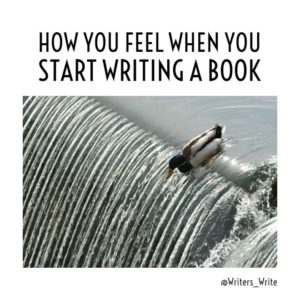
Lastly, you need to make sure that your book has relevance and appeal. This means that it should appeal to a wide audience and have commercial potential.
By following these steps, you can increase your chances of writing an engaging book that is bound to reach numerous audiences.
Title your manuscript
Titling is both an art and a science. You want a title that is creative and catches the eye, but you also don’t want to spend months coming up with a title only to find out it’s already been taken.
A working title can help you focus your thoughts and start thinking about titling your book long before you’re ready to commit. It can also be helpful to look at other books in your genre or field and see what kinds of titles they have.

Ultimately, the best way to determine your actual title is to sit down and brainstorm a list of possibilities. Don’t worry about being too creative at first – just get a list of potential titles down on paper. Then, start narrowing it down to the one that’s perfect for your book, a title that is relevant to your book’s theme.
Complete your draft
The first step to completing the manuscript of your book is understanding what a first draft is. A first draft is not a perfect version of a book ready for publication. It is, however, a solid foundation to build on.
A first draft is also an important tool for getting feedback from beta readers and editors. With that in mind, here are some tips for completing the first draft of your book:
- Set a goal for how many words or pages you want to write each day, and stick to it. Even if you only write 500 words a day, you’ll make significant progress over time.
- Don’t worry about perfection. Just get the story down on paper (or screen). You can always go back and revise later.
- Make use of an outline or other planning tools to keep yourself on track. It can be helpful to have a clear plan before you start writing so that you know where your story is going.
- Create a writing routine that works for you and stick to it as much as possible. Some people like to write in the morning, others at night. Find what works for you and stick with it.

Set a deadline for completing the first draft, and do whatever it takes to meet that deadline. Having a timeline will help keep you motivated and on track. Taking the time to complete a strong first draft will pay off in the long run and help make your book the best it can be.
Editing your book
Editing your first draft is vital to creating a book that is a great read. It allows you to hone your voice as a writer, and make sure your storytelling is interesting and effective. However, editing can also be a daunting task, especially if you’re not sure where to start. Here are a few tips to help you edit your first draft and create a book that is distinct and flawless.
First, it’s important to take a step back and look at the big picture. What is your book about, and what are you trying to achieve? Once you have a clear idea regarding your goals, start to identify areas that need improvement.
Next, it’s time to get down to the details. Read through your draft line by line, paying attention to spelling, grammar, and syntax. Make sure each sentence is clear and concise and flows smoothly into the next. If you come across any sections that are unclear or confusing, make a note of them so you can go back and revise them later.

Finally, don’t be afraid to cut out anything that isn’t working. Even if you love a particular scene or character, if it’s not serving the overall story, it needs to go. Trust your instincts, and be ruthless in your editing. By following these steps, you can be confident that you’re creating a book that is both enjoyable to read and mechanically sound.
The editing process in traditional book publishing can vary depending on the size and the project’s scope, as well as the specific needs of the author and publisher. However, there are generally three rounds of editing that take place: developmental editing, copy editing, and proofreading. Developmental editing is the first and most comprehensive round of editing, and it typically focuses on assessing the overall structure and the book’s contents.
Once the developmental edits are complete, the manuscript moves on to copy editing, which involves a more detailed edit that addresses issues such as grammar, style, and clarity. Finally, proofreading is the final review before publication, and it ensures that all errors have been corrected. The editing process can be time-consuming and challenging, but it is essential to producing a high-quality book.
Format your manuscript according to the standard specifications
The first aspect of how to publish a book is to look at how you are presenting your book. Formatting your book according to the standard specifications is important in making your book look professional and interesting. There are a few things to keep in mind when formatting your book. First, the margins should be set at one inch around the page. The text should be aligned to the left, and the first line of each paragraph should be indented five spaces.
Secondly, the title page should include the book’s title, the author’s name, and the copyright information. The page number should be centered at the bottom of the page. Finally, all the pages in the book should be numbered consecutively, starting with the title page. Following these simple guidelines will help you create a professional-looking book that is sure to impress your readers.
Design the book cover
An aesthetic and visually compelling book cover is essential to creating an impression on potential readers and conveying the book’s theme. The cover is often the first thing that a potential reader will see, so it is important to make sure that it is eye-catching and accurately reflects the contents of the book. In terms of design, there are a few key elements to consider.
First, the cover should be relevant to the book’s genre. Second, the cover should be visually appealing and should complement the title and author’s name.
Third, the cover should accurately reflect the book’s tone and theme. For example, a dark and suspenseful thriller will have a very different cover than a lighthearted comedy.
By keeping these elements in mind, you can create an effective and aesthetic book cover that will make a great first impression on potential readers.
Create an author website and social media profiles
In the age of social media, it’s more important than ever for authors to connect with potential readers online. An author’s website and social media profile are essential tools for staying relevant and reaching out to publishers and readers.
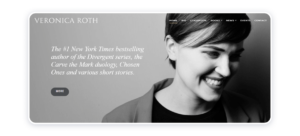
By creating a community of readers, you can stay up-to-date on the latest trends in publishing and connect with people who share your love of books. In addition, an author website is a great way to showcase your work and connect with potential fans. By staying active on social media and author websites, you can make sure that your work is seen by the people who matter most.
Determine your publishing route
Publishing your book is a process that takes time, effort, and determination. There are many routes to choose from, and it can be difficult to know which one is right for you. The best way to determine how to publish a book is to make informed choices and revise your process accordingly. An important thing to consider when publishing your book is your audience. Who do you want to reach with your book? Once you have a clear idea of your target audience, begin to research the different publishing routes and choose the one that will reach them most effectively. This is an inevitable part of publishing a book.
Another important thing to consider is your budget. This can help you narrow down your options and choose the route that is most affordable for you when it comes to how to publish a book. Finally, don’t be afraid to revise your plan as you go. As you learn more about the publishing process, you may find that certain routes guide you more effectively. By being flexible and willing to adjust your plan, you can ensure that your book reaches its full potential when you publish it.
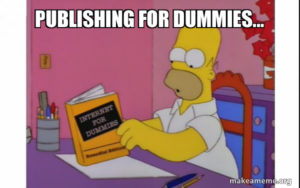
The most common options are traditional publishing, self-publishing, and hybrid publishing. Each option has its advantages and disadvantages, and the best choice for any given writer will depend on their specific goals and circumstances.
Publishing a book in the traditional way offers the greatest chance of seeing one’s book in major bookstores and achieving high sales figures. However, it is also the most competitive route, and many writers will never receive a contract. Self-publishing gives writers complete control over their work, but it can be difficult to generate significant sales. Hybrid publishing forms a middle ground between the two, offering some of the benefits of publishing the traditional way while still allowing writers to maintain a high degree of control.
What is traditional publishing?
It is when a publisher agrees to publish your book and handles the distribution, marketing, and sales. You retain the copyright to your book but give up some creative control. It is also called “trade publishing.” This means it is popular because it offers credibility that self-publishing does not. It can be difficult to get a contract when you are publishing a book through this means, but once you do, it offers many advantages.
Traditional publishers will help edit your book, design the cover, format the interior, and print and distribute the book. They will also handle the marketing and publicity. To publish your book traditionally, you need to find an agent who will represent you to publishers. This can be a difficult and time-consuming process, but if you are successful, it can lead to a publishing contract and a great deal of support for your book.
What are the advantages of Traditional Publishing?
This has been the go-to option for aspiring authors for centuries. And while self-publishing has gained popularity in recent years, traditional publishing still has a lot to offer. The biggest advantage is that it provides gatekeepers to help filter out the content. In other words, traditional publishers are less likely to take a chance on an unknown author with a risky concept. But if an author can manage to get past the initial hurdle, it also offers several other advantages.
For instance, traditional publishers can provide access to larger audiences, more experienced editorial teams, and greater marketing resources. In addition, traditional publishers typically offer higher royalty rates than self-publishing companies. So while it may not be right for everyone, it can still be a highly advantageous option for many authors.
What are the disadvantages of Traditional Publishing?
One of the key disadvantages is the amount of control that authors have to give up. In traditional publishing, once an author signs a contract, they typically no longer have any say in how their book is edited, designed, or marketed. This can be frustrating for authors who have a clear vision for their work and want to be involved in every step of the process.
Additionally, traditional publishers often take a very long time to release a book. From the time an author finishes writing their manuscript to the moment, it hits shelves can easily be a year or more.
Finally, traditional publishers typically require authors to invest their own money into marketing and promotion. While the publisher will provide some support, authors are often responsible for generating a large portion of their buzz. This can be difficult for authors who don’t have the financial resources or social media following to effectively market their work. For all these reasons, it is not always the best option for every author.
Research Publishers and Agents
Formatting the book to standard specifications of the first steps. Next, research appropriate publishers and agents who might be a compatible match for your book. It’s important to send your manuscript to publishers and agents who are willing to read material from new authors in your genre.
Third, follow their formatting guidelines carefully when preparing your manuscript for submission.
Finally, once you’ve found a good publisher or an agent, don’t forget to follow up and send them periodic updates on your writing progress. Finding an agent who is compatible with your work can be a daunting procedure yet it owns prospects. By understanding the process and taking the time to do things right, you’ll increase your chances of getting your book published the way you want it.
Write a query letter
A query letter is a letter written by an author to a literary agent or publishing house to secure representation or publication. A query letter should be one page, single-spaced, and contain three paragraphs: the hook, the mini-synopsis, and the bio.
The hook should be the first paragraph and should grab the reader’s attention. The hook can be a summary, an interesting plot twist, or something else that will pique the reader’s interest.
The second paragraph is the mini-synopsis, which gives a brief overview of the book. This paragraph should give enough information to give the reader a sense of what the book is about without giving away too much of the plot.
The third and final paragraph is the bio, which tells the reader a little bit about you, the author.
Following these simple guidelines will help you get started on the path to publication.
Write a book proposal
A book proposal forms a necessary step if you want to score a successful book deal with a publishing house. But what exactly is a book proposal, and what should it include? In its simplest form, a book proposal is a document that outlines your book idea, including information about your target audience, marketing plans, and competition.
It also includes an overview of your book’s content, as well as sample chapters. These components are important because they will help convince a publisher that your work is worth investing in. Keep in mind that a book proposal is not the same thing as a book manuscript – it’s simply a way to sell your book idea to potential publishers. So make sure to put your best foot forward and create a book proposal that is compelling and professional. With the right approach, you get to land a book deal in no time!
What is Self-publishing?
This means of publishing has come a long way since its humble beginnings. In its earliest form, it was a way for authors to bypass traditional publishing houses and print their books. This was often seen as a last resort but today it has undergone a major transformation in recent years. Numerous authors are trying to understand the process of how to self-publish a book.
With advances in technology, self-publishing is now a much more viable option for authors. Thanks to online platforms, authors can now self-publish their books with relative ease. And with print-on-demand services, self-published books can be of comparable quality to traditionally published books. Best of all, self-publishing gives authors complete freedom over their work, from the cover design to the book’s price. In many ways, it has become the new frontier for authors looking to create and control their destinies.
What are the advantages of Self Publishing?
It has become a popular option for authors in recent years. There is growing awareness of how to self-publish a book. First, self-published authors have complete control over their work, from the cover design to the marketing strategy. They can also release their book on their determined schedule, rather than waiting for a traditional publisher to approve the manuscript. In addition, self-publishing is often less expensive than traditional publishing, meaning that authors can keep more of the profits from their book sales.
What are the disadvantages of Self Publishing?
However, there are also some disadvantages here. For example, self-published authors may have difficulty getting their books into bookstores and libraries. In addition, they may not have access to the same editing and marketing resources as traditional publishers. Nevertheless, self-publishing provides a level of freedom and control that is appealing to many authors. As a result, it is likely to continue growing in popularity in the years to come.
What is Hybrid Publishing?
As the publishing sphere is evolving, a new mode of book publication has emerged- Hybrid Publishing. It is an exciting new model that combines the best of traditional and self-publishing. With hybrid publishing, authors retain complete creative control while also benefiting from the expertise, resources, and networks of a traditional publisher. The hybrid model is particularly advantageous for authors who are looking to reach a wide audience and build a long-term career in writing.
Hybrid publishers are typically smaller than traditional book publishing houses. Their scale enables them to be more nimble and responsive to market trends. They are also more likely to take risks with new and emerging authors. In short, hybrid publishing is an appealing option for many authors who are looking to achieve success in today’s ever-changing publishing landscape.
What are the advantages of hybrid publishing?
Hybrid publishing is a mix of traditional and self-publishing, in which the author pays to have their book published instead of going through the submission process with a large publishing house. While hybrid publishing has its advantages, there are also some disadvantages to be aware of before deciding to go this route.
The biggest advantage of hybrid publishing is that it gives authors more control over the publication process. They can choose the editor they want to work with, decide on the cover design, and set their release date. In addition, hybrid publishers typically offer higher royalties than traditional publishers. For authors who can invest the time and money upfront, hybrid publishing can be a great option.
What are the disadvantages of hybrid publishing?
However, there are also some downsides to hybrid publishing. One is that it can be difficult to get your book into brick-and-mortar stores. Since you’re not going through a major publisher, you won’t have the same distribution channels. In addition, hybrid publishers often require authors to purchase a certain number of books upfront.
Before deciding whether or not hybrid publishing is right for you, it’s important to weigh the pros and cons carefully. For some authors, it’s the perfect solution. There is no wrong answer – it all depends on your specific situation and goals.
Create a paperback version of your manuscript
If you’re planning to self-publish your book, one of the first things you’ll need to do is create a paperback version of your manuscript. Fortunately, there are a few simple steps you should follow to ensure that your paperback is well-formatted and follows all the standard guidelines.
First, it’s important to make sure that your manuscript is professionally typeset. This means using a consistent font size and style throughout the document, and ensuring that all the margins are correctly aligned.
Once your manuscript is typeset, the next step is to print it out on high-quality paper. This will ensure that your book looks its best when it’s printed. Again, you can either do this yourself or hire a professional printer.
Finally, once your book is printed, you’ll need to bind it together. This can be done using a variety of methods, but the most important thing is to make sure that the binding is strong and durable. Once it is bound, you’re ready to publish. Self-publishing houses offer the above services to writers to ensure professional and compelling work.
Create an ebook and audiobook version of your manuscript
In today’s digitally connected world, more and more readers are looking for ways to access books electronically. As an author, creating ebook and audiobook versions of your manuscript can help you reach a wider audience. Ebooks and audiobooks offer accessibility and convenience that traditional print books cannot match.

Each format of the book boasts its own unique advantages readers can purchase and download these versions online, and they can carry a digital library around with them on their e-reader or even their mobile phones. By creating eBook and audiobook versions of your manuscript, give your readers the accessibility and convenience they crave while also expanding your audience.
Market your book to potential readers
One of the most important things when marketing your book is to target a specific audience. By identifying potential readers and understanding their needs, you can more effectively market your book. Additionally, it’s important to create a book launch and marketing plan that will generate interest for your book.
What are the different ways of marketing your book?
There are many different ways to market your book, and it’s important to find the approach that best suits your target audience. With a little bit of planning and effort, you can ensure that your book reaches its potential audience and enjoys commercial success.
One way to find your target audience is to consider where your potential readers might congregate. For example, if you’ve written a mystery novel, target readers who are fans of the genre by seeking out book clubs or online communities dedicated to mysteries. Once you’ve identified your target audience, you can start to create a marketing plan.
This plan should include both online and offline marketing tactics. For example, you might create a social media campaign to generate interest in your book or host a book launch party to build buzz. By taking the time to market your book effectively, you can ensure that it finds its way into the hands of potential readers.
Wait for reviews and promote your work accordingly
As an author, you’re always hoping for reviews. Reviews are a great way to generate word of mouth and get your book in front of new potential readers. But waiting for reviews can be frustrating, and it’s important to remember that not all feedback is created equal. Reviews from highly respected sources are more valuable than anonymous comments on Amazon, but even a bad review can be useful if you’re able to take the feedback and use it to improve your book.
Many authors find that embracing negative feedback can be surprisingly effective. By responding to reviewers professionally and positively, you can show that you’re open to constructive criticism and that you’re committed to making your book the best it can be.
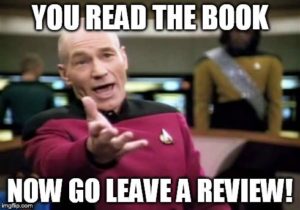
Embrace all reviews, positive or negative, and use them to help promote your book effectively. Thanks to reviews, you can reach a larger audience and ensure that your book remains relevant.

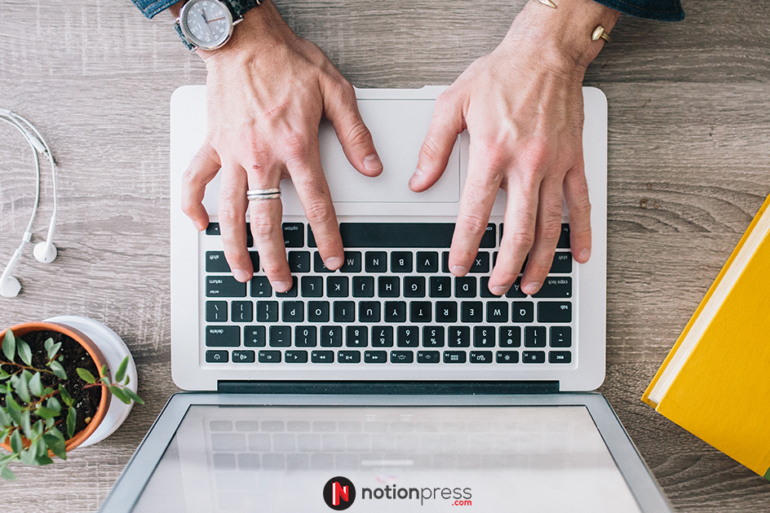
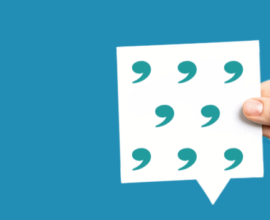
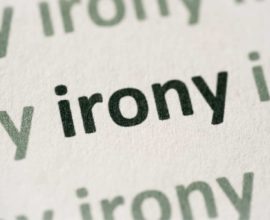


Pingback: How to Market your New Book Online | Publishing Blog in India()
Pingback: 9 Reasons Self-publishing Authors need Social Media. | Publishing Blog in India()
Pingback: Notion1990 | Pearltrees()
Pingback: Delhi Book Clubs | Self Publishing Blog()
Pingback: Top Bangalore Book Clubs - Every Bookworm's Favorite Place()
Pingback: Top Mumbai Book Clubs | Book Publishing Tips Blog in India()
Pingback: Chennai Book Clubs | Top Book Reader's Blog In India()
Pingback: 7 Books To Read To Become Great Writer | Publishing Blog()
Pingback: Famous authors who chose self-publishing | Publishing Blog in India()
Pingback: Top Book Writing Software for Authors()
Pingback: Mumbai Book clubs that every bookworm should join – Site Title()
Pingback: Delhi Book Clubs that Every Bookworm Should Join – Site Title()
Pingback: Bangalore book clubs that every bookworm should join – Site Title()
Pingback: Unique biographies that you need to read | Publishing Blog in India()